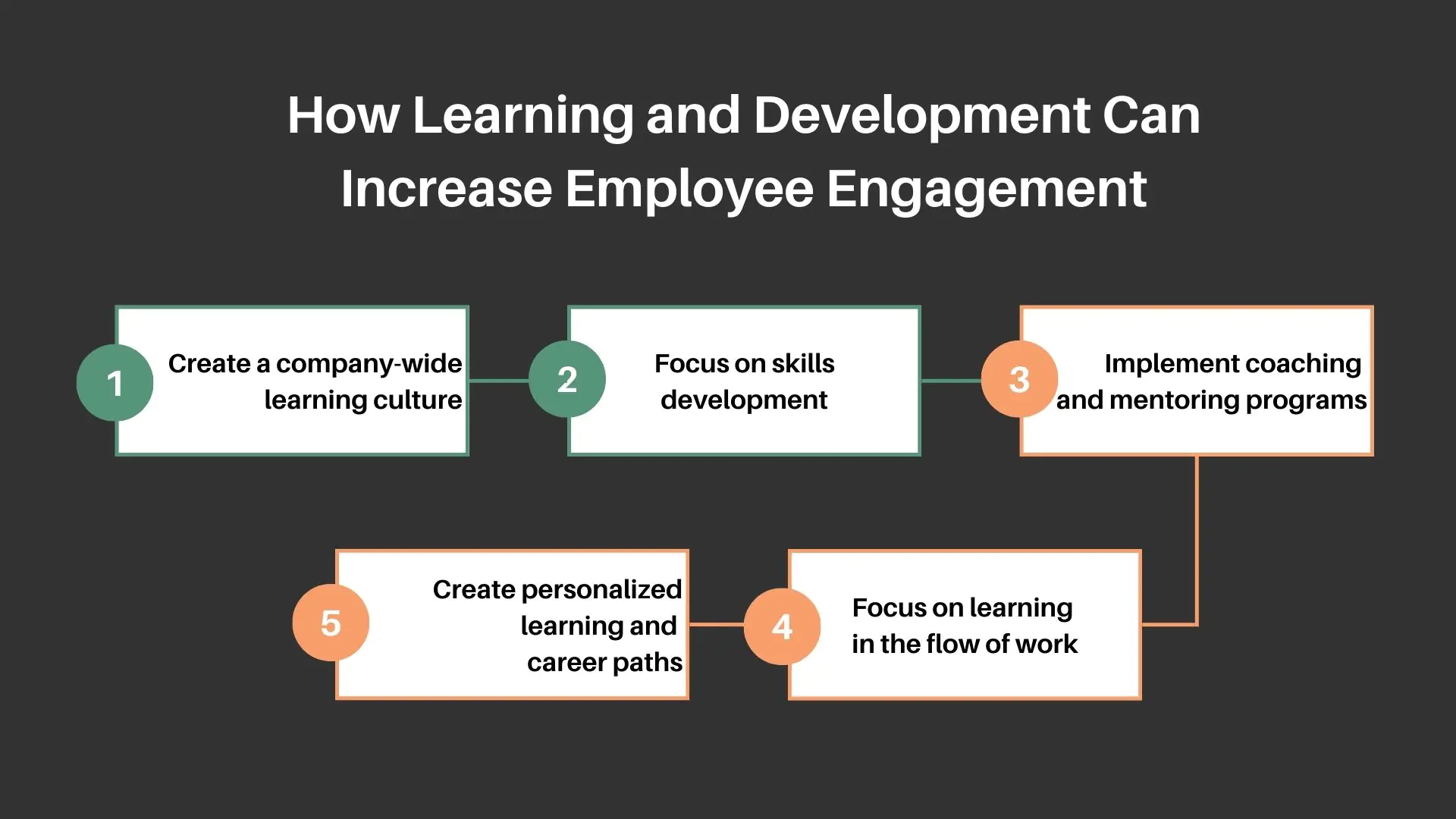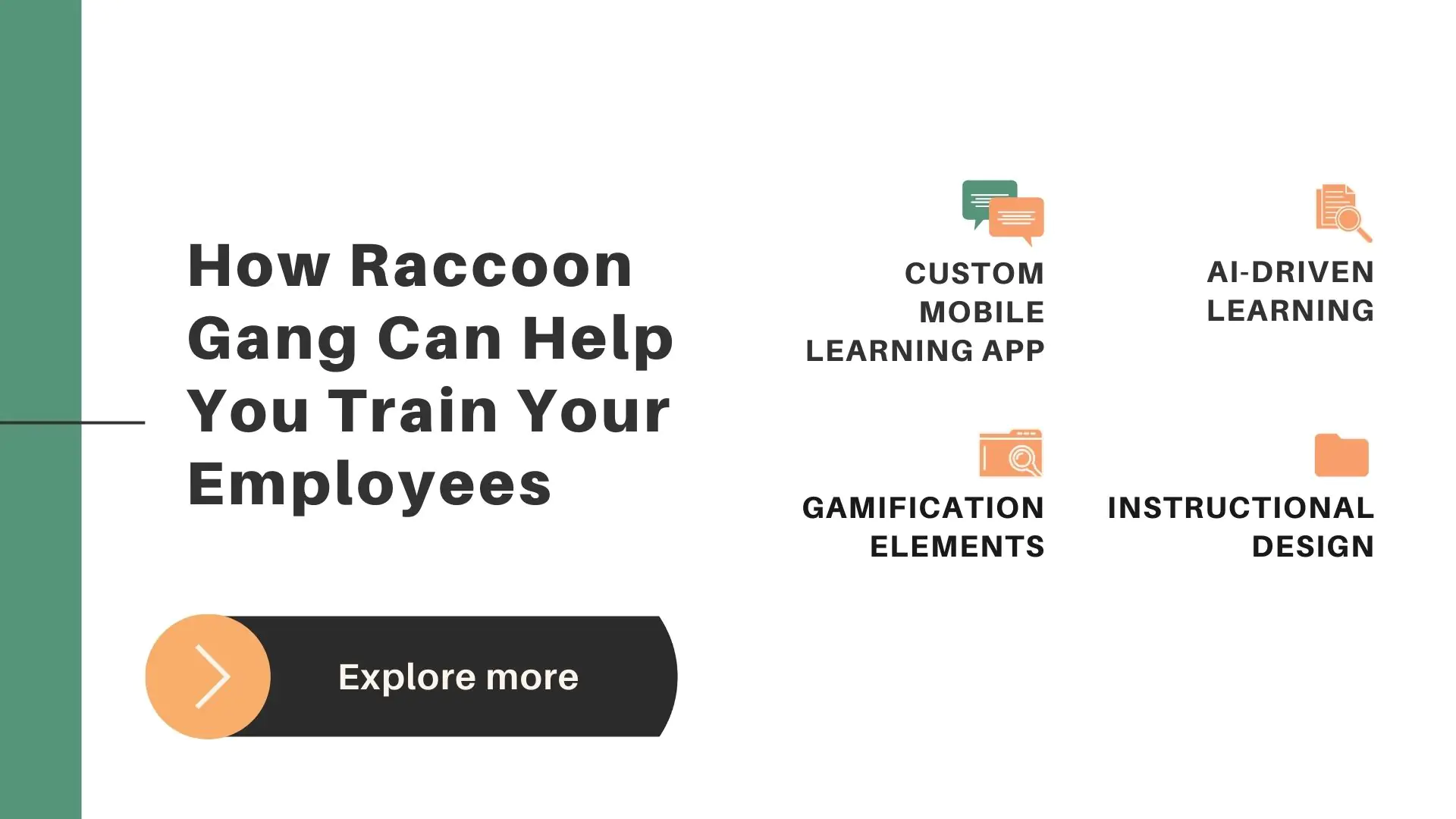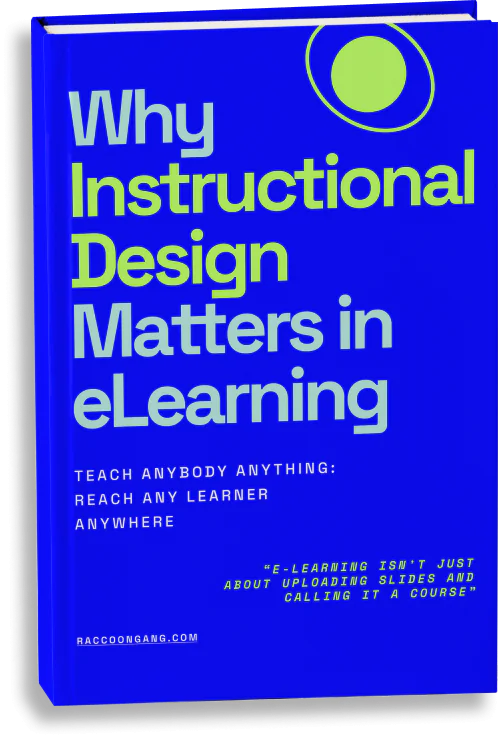Employee training and development offer organizations the opportunity to expand their in-house knowledge base, instill critical skills, and enhance on-the-job performance. Yet many employers view employee training and development as too costly, with limited returns and the risk of project delays. The key is anchoring every course in proven learning principles in training and development—from adult learning theory to hands-on practice, so that your investment accelerates skill acquisition and drives measurable impact. In this article, we’ll explore seven foundational learning and development principles and the advantages of a program built on these insights.
Most companies execute corporate learning principles in core areas such as:
- Human resources and compliance
- Management and leadership
- Sales and customer service
- Project management and process improvement
- Technical systems and software tools.
Treating these topics as mere check-the-box exercises misses the mark. Shake things up: pepper in spaced repetition that circles back just as ideas slip away, stage simulations that mirror Monday morning chaos, and fire off feedback the moment a task wraps.
The stats speak volumes—94% of employees say they’d stay longer if their firm invests in their employee training and development, but 41% confess they’d be eyeing the exit if no growth map appears. Theory mutates into muscle memory and lives inside everyday actions. Context and timing hook the mind, turning dry bullet points into a practiced habit.
When project managers practice new planning techniques in scenario-based workshops and then receive targeted coaching, they not only meet deadlines ahead of schedule but also gain the confidence to tackle future challenges. These practical skills shift training from a cost center to a strategic asset.
Effective Employee Training: The Principles
A common misconception is that only trainers need to understand how adults learn. In truth, managers, supervisors, and team leaders also must grasp learning principles. They’re the ones who evaluate performance, identify skill gaps, and reinforce training on the job.
“Great managers go beyond checking boxes; they weave microlearning moments into daily routines, set up peer coaching huddles after key tasks, and use data-driven nudges to keep new skills top of mind. This social, continuous approach embeds training in the flow of work rather than treating it as a one-off event.” — Raccoon Gang’s Senior EdTech Engineer
By knowing how their teams absorb and apply knowledge, they can:
- Customize learning paths to individual needs
- Assign meaningful practice tasks at the right moments
- Provide constructive feedback that accelerates mastery
- Track progress and refine programs based on real data.
Below are seven essential principles to guide your employee training and development strategy—principles that turn one-off workshops into continuous growth engines for both people and the organization.
Higher Motivation and Sense of Self-Direction
Too often, training feels like a lecture: information is poured in, then forgotten. But when people decide on their path, they dive in with real enthusiasm. Empowering employees to steer their own growth taps into their natural drive. They become explorers of knowledge, not just recipients.
When we teamed up with NASA on the Open Science 101 curriculum, we handed learners the keys, letting them pick the order of five modules and set personal milestones. The result? Completion rates jumped nearly 20%, and learners told us they felt more ownership over their employee training and development.
Try these effective training strategies to spark self-directed learning:
- Invite employees to map out their own milestones and choose topics that align with their passions
- Host upbeat “learning sprints” where small groups check in on each other’s goals and celebrate wins
- Share clear progress dashboards so everyone can see how their efforts reflect core learning principles and what to tackle next.
Aligning with corporate training trends helps ensure your training principles still match real-world practice.
Desire to Choose How to Learn
In today’s diverse workplaces, no two people soak up information in the same way.
Some people absorb ideas from pixel-perfect infographics that turn complexity into clarity. Others bloom when they’re elbow-deep in hands-on workshops, sleeves rolled up and curiosity firing on all cylinders. And a few sparks to life in a heated roundtable, trading insights, challenging assumptions, riffing off each other’s ideas. Embracing this kaleidoscope of preferences taps into adult learning theories, turbocharges training effectiveness, and fuels a continuous learning culture where every learner feels acknowledged and empowered.
When Raccoon Gang revamped the EBRD Policy Academy on Open edX, we gave thousands of staff and external stakeholders the freedom to pick desktop or mobile delivery, bite-sized modules or full-length presentations. By letting learners mix and match formats, complete an AR-driven simulation one day, join a live webinar the next, we saw a 40% lift in engagement and a lively feedback loop that drove an even stronger continuous learning culture across regions.
Effective employee training types for choice include:
- Blended formats: microlearning videos on your phone, instructor-led workshops in person, and self-paced eLearning modules on your schedule
- Hands-on simulations that mirror actual job tasks so learners can practice in safe, realistic scenarios
- Discussion forums or peer groups for collaborative reflection and the chance to learn from each other’s experiences.
Use of Life Experiences to Learn
Every employee carries a toolbox of past successes, setbacks, and hard-earned insights. Using these “living case studies” makes training more hands-on through experiential learning, keeps motivation high, and helps employees stay genuinely involved. When you build on what people already know, you transform sessions into dynamic forums for real-world problem solving—and spark a spirit of self-directed learning that lasts well beyond the classroom.
“Over 85% of our EBRD Policy Academy participants told us that framing modules around their own project challenges made the content stick—and 78% said it boosted their confidence to apply new skills immediately.” — Raccoon Gang’s EdTech Engineer
To turn experience into impact that matches the adult learning theories:
- Invite participants into storytelling circles where they share a recent success or roadblock, setting the stage for personalized learning paths
- Craft case studies drawn from actual company initiatives so every lesson feels instantly relevant
- Run peer-review workshops that let employees coach one another, drawing on their unique expertise and perspectives.
Acknowledgment of the Value of Mentorship and Support
Foundations are built in the classroom. Volcanoes erupt when mentors step in. They fuse theory with gut-level, on-the-ground experiences (think rapid-fire war stories that shatter old habits and replace them with instant, actionable know-how).
A mentor’s off-hand comment can ignite a million “aha” moments. Pair that with ongoing cheerleading, with swift kudos for small wins and laser-sharp pointers when you wander off course, and you get a surge of employee engagement in training.
Learning motivation skyrockets. Training effectiveness? It leaps forward as mentors model peak performance and deliver feedback before you even realize you needed it.
When Raccoon Gang teamed up with a top public research institution’s continuous education initiative on Open edX, we embedded a mentor-matching feature that paired learners with experts across 150+ countries. That change drove completion rates up by 20–30% and saw learners log 40% more follow-up questions—proof that hands-on guidance accelerates both knowledge transfer and confidence.
To strengthen mentorship:
- Pair newcomers with experienced mentors and schedule regular check-ins via chat or LMS forums
- Host “mentor cafés” in small groups, rotating through mentor-led discussions on real challenges
- Survey mentees about their confidence levels and track reductions in time-to-competency to measure impact.
Focus on Results
It’s easy to get lost in theory, but in corporate learning principles, tangible gains are what keep people coming back. When employees spot a clear link between training and better performance, fewer mistakes, faster workflows, happier customers, they take self-directed learning more seriously. Embedding real-world training outcomes at every step, backed by solid instructional design, turns courses into powerful engines for growth.
“We overhauled one client’s self-paced modules to start each lesson with an error-rate goal. Six months later, they saw a 15% drop in defects, a 20% elevation in team productivity, and course completion climb by 25%. That kind of data proves why focusing on results isn’t just a nice-to-have; it’s everything.” — Raccoon Gang’s EdTech Engineer
Result-driven tactics include:
- Defining clear KPIs, such as error rates, throughput, and customer satisfaction, before a single slide is built
- Pulling post-training assessment data and on-the-job metrics into one dashboard to calculate ROI and refine your effective training strategies
- Shining a spotlight on team wins, from “most improved” awards to shout-outs in the company newsletter, to reinforce the value of employee training and development.
Openness to New Ways of Learning
The digital age has flipped training on its head. From AR-driven walkthroughs to live, interactive webinars, fresh tools let teams explore new skills in context. Embracing these methods draws on learning principles that spark learning motivation and encourage self-directed learning, while experiential learning exercises bring theory into vivid reality. When organizations adopt these effective training strategies, they stay in tune with a workforce that expects modern, engaging experiences.
At one client’s Open edX rollout, Raccoon Gang introduced our RG Gamification micro-service. By layering points, badges and leaderboards onto real course actions, learners dove into challenges with 60 percent higher completion rates—proof that mixing new tech with smart instructional design lifts training effectiveness.
Innovative approaches include:
- Piloting VR safety drills or AR product demos and gathering feedback to refine experiences
- Introducing AI-driven coaching bots that push bite-sized tips exactly when learners need them
- Hosting “tech taster” sessions where employees try out new platforms and vote on favorites.
Emphasis on the Practicality of Learning
Books and slides lay the groundwork, but nothing beats rolling up your sleeves and trying it yourself. When you anchor employee training and development in live problem solving, teams see exactly how lessons map to their day-to-day roles.
This hands-on focus aligns with corporate learning principles and gives life to effective training strategies, turning training from an abstract exercise into real performance gains.
“Our rollout of customer-service simulations boosted first-contact resolution rates by 32 percent and cut average response time in half. Learners told us they felt twice as confident handling tough calls because they’d already practiced in a safe, simulated setting.” — Raccoon Gang’s EdTech Engineer
Practical exercises might include:
- Set up a real-world lab where mixed squads of designers, sales gurus, and analysts confront an actual market hiccup, with data streams pulsing, client emails piling up, and timers ticking, so they learn by doing.
- Launch role-play boot camps that flip a routine sales call into a live crisis scenario, forcing participants to morph from rep to mediator, adapt tone on the fly, and de-escalate tension.
- Roll out multi-phase projects where teams draft a plan, scramble through resource gaps, adjust tactics amid surprise roadblocks, then stand before leadership to showcase outcomes and insights.
By weaving in real scenarios and interactive tasks, you ensure employees aren’t just passive listeners but active participants, ready to apply new skills immediately and drive measurable results.
How to Implement Learning Principles in Training and Development
Getting learning principles right means starting with your people. Talk to them—run quick chats or send out simple surveys—to discover what skills they really need. Then use a lightweight ADDIE approach to keep things on track: analyze their needs, design engaging activities, build the content, roll it out, and check back in.
Don’t rely on just a thumbs-up at the end. Tie training effectiveness to real work metrics—fewer mistakes on the line, faster project handoffs, happier customer feedback. A dashboard that blends survey comments with actual performance data helps you see which parts click and which need a tweak. Here’s a friendly road map to bring it all together:
Listen and map gaps:
- Schedule short one-on-ones or group huddles to hear pain points
- Chart current skills versus where you want to be next quarter.
Craft hands-on moments:
- Build quick simulations or challenges that mirror real tasks
- Let folks pick between a short demo video or a small team lab to keep things fresh.
Mix up your materials:
- Blend text, audio clips, and snippets of video so everyone finds something that clicks
- Make sure all content plays nicely on phone and laptop—learning shouldn’t wait for a desk.
Launch with a light touch:
- Test new lessons with a small group, gather their honest takes, and adjust as you go
- Offer pop-up Q&A sessions or virtual office hours so people can get help right when they need it.
Watch, learn, improve:
- Look at how training scores align with actual job results—are tasks getting done faster? Errors dropping?
- Bring your team back together regularly to share tips and suggest fresh tweaks.
By treating your training as an ongoing conversation (listen, build, test, refine), you turn a one-time course into a living, breathing journey. That’s where true learner engagement and lasting training effectiveness happen.
Benefits of Effective Employee Training
Immediate Improvements
Grounding sessions in core learning principles equips teams with tactics they can use the moment they leave the room. As soon as someone applies a new shortcut or process tweak and sees smoother workflows, productivity climbs. Early wins like these make training outcomes obvious and spark excitement across the department. Doable recommendations:
- Host weekly “tool tip” moments where each person shares one shortcut they learned
- Embed micro-demos in your team chat or intranet so everyone can reference them on demand
- Track performance metrics (task completion time, error rates) before and after training to highlight gains.
Targeted Skill Building
Everyone’s starting line is different. By pinpointing individual strengths and gaps—whether it’s mastering a reporting dashboard or leading client calls—you deliver focused modules that speak to each person’s needs. That custom approach drives deeper employee engagement in training because learners see their own progress in real time. Doable recommendations:
- Run quick self-assessments or manager check-ins to identify the top three skill gaps per person
- Offer a mix of learning formats (short videos, hands-on labs, guided role-plays) so people can pick what works for them
- Celebrate the completion of each micro-module with a badge or shout-out in your team channel.
Clear Standards
Progress stalls when people second-guess every move. Lay out crystal-clear step-by-step playbooks, such as how to create online employee training and sketch a project blueprint or run a compliance sweep, so nobody is left flailing in the dark. When employees have a vivid picture of success, training outcomes soar and endless rework vanishes.
Doable recommendations:
- Create simple checklists or flowcharts for critical tasks and make them easily accessible
- Schedule brief walkthrough sessions where teams practice the standard steps together
- Build quick LMS quizzes that mirror your standard procedures so people test their understanding.
Safe Space for Experimentation
Innovation happens when people feel free to try new approaches without worrying about negative fallout. Low-stakes simulations—like a mock data breach exercise or a role-play sales pitch—turn mistakes into lessons. Over time, that freedom fosters a culture of continuous learning, where curiosity and experimentation are the norm.
Doable recommendations:
- Set up a sandbox environment where teams can practice new tools or processes without impacting live systems
- Hold a monthly “what I learned from failing” session to normalize constructive feedback
- Collect quick feedback after each simulation to refine future exercises.
Summary Table
| Benefit | Key Actions | Impact Metric |
| Immediate Improvements | Tool-tip sharing, micro-demos, before/after tracking | Task time ↓, error rate ↓ |
| Targeted Skill Building | Self-assessments, mixed-format modules, and badge rewards | Module completion ↑, engagement ↑ |
| Clear Standards | Checklists, live walkthroughs, LMS quizzes | Rework ↓, compliance score ↑ |
| Safe Experimentation | Sandbox drills, failure-sharing sessions, and feedback loops | Idea submissions ↑, training satisfaction ↑ |
How Does Raccoon Gang Bring Learning Principles to Life?
Reality check: theories are fine, but without action, they’re just words on paper. We kick off by aligning your employee training and development goals with a sharp needs analysis. Then we craft interactive modules on the Open edX LMS—complete with scenario-driven simulations, microlearning bursts, and peer collaboration zones.
Real-time dashboards track every click and quiz result so you know exactly when someone masters a milestone. Our instructional design services fuse each learning principle into every slide, every exercise, and every feedback loop, creating training solutions that feel less like school and more like real growth.
The Final Word
Learning principles in training and development matter. Personalized learning paths unlock curiosity. A solid learning and development strategy keeps your programs fresh. Whether you need an agile LMS rollout, seamless training implementation, or end-to-end support for employee training and development, Raccoon Gang stands ready. With expert instructional design and Open edX power, we build bespoke training solutions that spark engagement and deliver measurable results.






